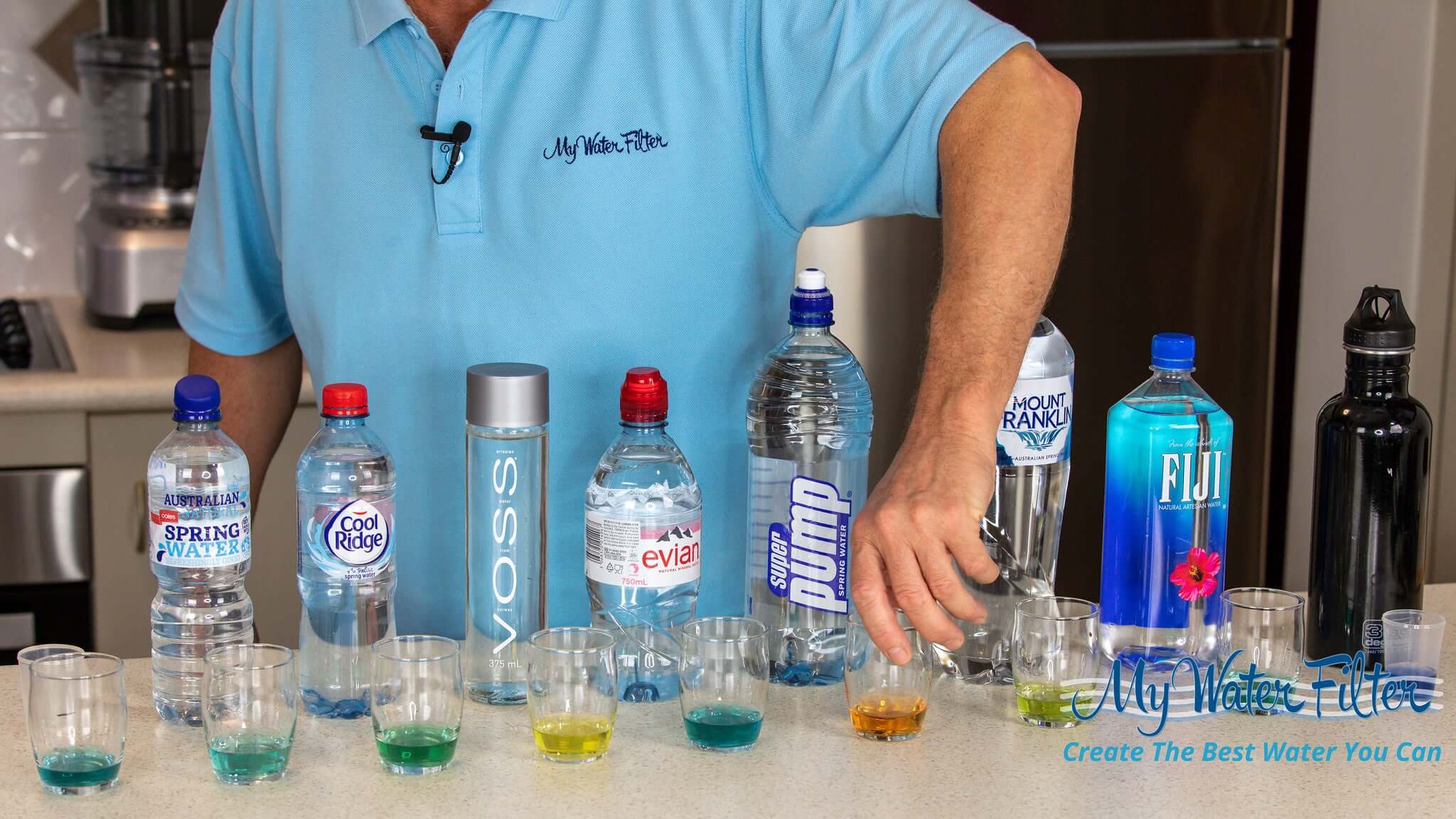People often talk about the pH of water, but what does it really mean? Basically, pH is a simple scale from 0 to 14 that tells us whether water is acidic or alkaline. Right in the middle, at 7, is neutral. Anything below 7 is acidic, and anything above that is alkaline.
Table of Contents
Why Is It Important to Talk about Water’s pH?

Knowing the pH of your water is important because it’s one of the key indicators of water quality and safety. If the pH is either too acidic or too alkaline, it's a red flag. For instance, pollution can cause the water in our rivers and reservoirs to become acidic. This is not only harmful to the fish and plant life living in it but also means our treatment facilities have to work much harder to clean the water before it gets to you.
Understanding Your Body’s Delicate pH Balance
Our bodies are amazing things, always working behind the scenes to keep everything stable and in harmony. A huge part of this is maintaining our body's pH balance. Our bodily fluids, from our blood to the fluid inside our cells, need to stay within a very tight pH range to work properly. If that balance is thrown off, it can affect our overall health.

For most healthy adults, our blood pH needs to be incredibly specific: somewhere between 7.35 and 7.45. In this slightly alkaline state, all our internal systems run at their best. When our body tips towards being too acidic for a long time, it can lead to all sorts of problems. This condition, sometimes called "acidosis," is often a result of our modern lifestyles. Things like a diet heavy on processed foods and sugary drinks, ongoing stress and not getting enough exercise can all contribute to an acidic internal state, making it harder for our body to do its job. Over time, this can cause you to feel tired more often, weaken your immune system and potentially lead to more serious health issues.
Best pH for Drinking Water
Since our bodies work so hard to stay in balance, it makes perfect sense that the water we drink should help, not hinder, that process. As such, the ideal drinking water should have a pH of at least 7, which is neutral. When we drink water that's too acidic, it puts extra strain on our body's natural buffering systems. By choosing water that’s neutral or slightly alkaline, we’re giving our body a helping hand in maintaining its internal balance.
What's Affecting the pH of Your Tap Water?
Even though your local water supply is generally treated to be pH neutral, a few things can change its quality along the way to your tap. Here are some factors that can affect your water's pH:
Pollution: Run-off from industrial plants, farms or landfills can seep into waterways and change their natural pH.
Water Treatment: While necessary for killing germs, treatments like chlorine and fluoride can make the water slightly more acidic.
Natural Events: Things like floods or cyclones can introduce materials into water sources that change the pH.
Equipment Failures: If something goes wrong at the treatment facility, the water sent out might not be properly balanced.
Old Plumbing: As pipes get older, especially copper or iron pipes, they can corrode and leach metals into the water, lowering its pH and making it more acidic.
Sewer Leaks: Contaminants from leaking sewer lines can get into the groundwater and affect the water’s pH.
Seasonal Changes: Heavy rain after a long dry spell can wash a build-up of organic matter into water sources, which lowers the pH as it decomposes.
Local Geology: The kind of rock and soil that water passes through can naturally make it more acidic or alkaline.
It's important to know that acidic water can be quite corrosive to metal pipes. More importantly, water with a low pH is more likely to carry heavy metals like lead, copper and cadmium, which you definitely don't want in your drinking water.

Are You Drinking a Toxic Brew of Heavy Metals?
On the flip side, some things can make water too alkaline. Groundwater that flows through limestone, for example, tends to be quite alkaline. Water with too much calcium and magnesium can taste a bit bitter and leave behind scaly deposits that clog up your pipes and appliances over time.
How Water Filters Can Improve Your Water pH
If you're concerned about what’s in your tap water, from chlorine to potential heavy metals, you're not alone. A good water filter is a great way to take control of your water quality.
Carbon Filtration and Reverse Osmosis Systems
The best systems out there neutralise your water without adding any chemicals. They often use a smart combination of carbon filtration and reverse osmosis (RO). The carbon filter is brilliant at grabbing onto contaminants like chlorine, while the reverse osmosis process pushes water through a super-fine membrane, removing tiny dissolved solids and impurities that can make water acidic. This powerful duo doesn't just purify your water; it helps bring the pH back to a healthier, more neutral state.
If you're thinking that reverse osmosis is the way to go for clean, neutral/weak alkaline water, we highly recommend checking out systems like the HPF 4 Stage Reverse Osmosis Water Filter System with Low Alkaline. It’s designed to give you exceptionally pure water that truly supports your body’s health and hydration.
Alkalising Cartridge
For those who want to go one step further, some advanced filter systems include an alkalising cartridge. During reverse osmosis, some beneficial minerals can be filtered out along with the bad stuff. An alkalising cartridge puts a small amount of healthy minerals like calcium, magnesium and potassium back into the water. This not only restores a balanced mineral profile but also gently raises the pH, making your water perfectly pure and slightly alkaline.
The pH scale, ranging from 0 to 14, measures whether water is acidic, neutral (7) or alkaline. Maintaining the correct pH is crucial for water quality, as imbalances can indicate pollution and affect safety.
The human body functions best with a slightly alkaline blood pH (7.35-7.45), and drinking water with a neutral pH of at least 7 supports this natural balance without placing extra strain on the body.
Factors like pollution, old plumbing and water treatment processes can make tap water acidic, potentially leading to the corrosion of pipes and the leaching of heavy metals. Water filtration systems, such as those using reverse osmosis and carbon filters, can effectively neutralise the water's pH.
Hear from Our Satisfied Customers
What Does the pH Level of Water Mean?
The pH level indicates how acidic or alkaline water is on a scale from 0 to 14. A pH of 7 is neutral, anything below 7 is acidic and anything above 7 is alkaline. It is a key indicator of water quality and safety.
What Is the Recommended pH Level for Drinking Water?
The ideal drinking water should have a neutral pH of at least 7. Water that is too acidic can put extra stress on the body's systems, so choosing neutral or slightly alkaline water helps maintain your internal balance.
How Can a Water Filter Help Neutralise My Water?
Water filtration systems that combine carbon filtration and reverse osmosis are highly effective. The carbon filter removes contaminants like chlorine, while the reverse osmosis process removes dissolved solids that can make water acidic. Some systems also include an alkalising cartridge to add back beneficial minerals, which gently raises the pH.










